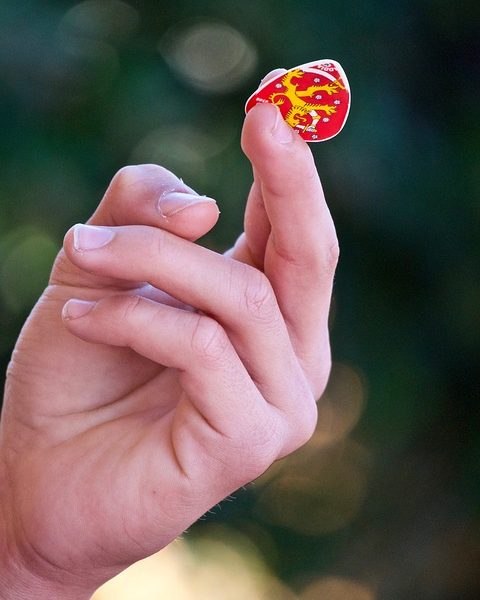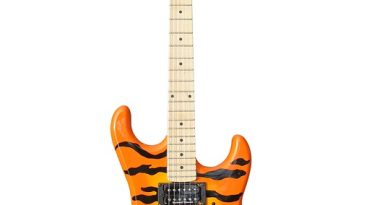Master Guitar Trills with These Expert Tips
Master Guitar Trills with These Expert Tips
Trills are an essential technique for any guitarist looking to add flare, speed, and complexity to their playing. A trill is a rapid alternation between two notes that are a half step or a whole step apart. Mastering this technique can add a dynamic and exciting element to your playing, but it takes practice and dedication to perfect. In this article, we will explore some expert tips for mastering guitar trills and taking your playing to the next level.
Understanding the Mechanics of a Trill
Before diving into tips for mastering trills, it’s important to understand the mechanics behind this technique. A trill is typically played by rapidly hammering on and pulling off between two notes with your fretting hand while keeping the picking hand steady. The idea is to create a continuous and even stream of notes that sound like a rapid vibration.
To execute a trill effectively, it’s crucial to maintain a light touch with your fretting hand and focus on creating a smooth and fluid motion between the two notes. Remember to keep your fingers close to the fretboard and use minimal pressure to produce clear and crisp notes.
Start Slow and Gradually Increase Speed
One of the key principles of mastering guitar trills is to start slow and gradually build up speed as you become more comfortable with the technique. Begin by practicing trills at a slow tempo to ensure accuracy and control over your finger movements. Focus on maintaining a consistent rhythm and clean articulation between the two notes.
As you begin to feel more confident with the trill, gradually increase the tempo while focusing on maintaining clarity and precision in your playing. It’s essential to work on developing muscle memory and coordination between your fretting and picking hands to execute trills smoothly at faster speeds.
Experiment with Different Finger Combinations
Experimenting with different finger combinations is another essential tip for mastering guitar trills. While the most common trill involves using your index and middle fingers, it’s important to explore different finger combinations to find what works best for you. Try practicing trills with your index and ring fingers, middle and ring fingers, or any other finger combination that feels comfortable and natural to you.
By experimenting with different finger combinations, you can discover new possibilities for creating unique and dynamic trills in your playing. This versatility allows you to add variety and complexity to your music while improving your overall dexterity and finger independence on the fretboard.
Focus on Building Finger Strength and Endurance
Building finger strength and endurance is crucial for mastering guitar trills and improving your overall playing technique. Trills require a certain level of finger strength and coordination to execute smoothly and accurately, so it’s essential to incorporate exercises that focus on developing these skills.
One effective way to build finger strength and endurance is to practice trill exercises that target specific finger combinations and patterns. Focus on gradually increasing the difficulty and speed of these exercises to challenge your fingers and push yourself to improve.
In addition to trill exercises, practicing scales, arpeggios, and other technical exercises can also help build finger strength and endurance. These exercises not only improve your overall technique but also enhance your ability to execute trills with speed and precision.
Use a Metronome to Improve Timing and Precision
Using a metronome is a valuable tool for mastering guitar trills and improving your overall timing and precision. A metronome helps you develop a steady sense of rhythm and timing while practicing trills at different tempos. Start by practicing trills at a slow tempo and gradually increase the speed as you become more comfortable.
Focus on playing in sync with the metronome to ensure that your trills are even and consistent. Pay attention to your timing and strive for accuracy and precision in your playing. By using a metronome, you can track your progress, identify areas for improvement, and work on refining your trill technique to achieve a higher level of proficiency.
Incorporate Trills Into Your Repertoire
To truly master guitar trills, it’s essential to incorporate them into your repertoire and practice them in the context of actual music. Experiment with adding trills to scales, chords, solos, and other musical passages to enhance your playing and create dynamic and exciting melodies.
Practice playing songs that feature trills or incorporate trill-like patterns to help you apply this technique in a musical context. By incorporating trills into your playing, you can develop a deeper understanding of how to use this technique creatively and effectively in your music.
Conclusion
Mastering guitar trills requires dedication, practice, and a commitment to refining your technique. By focusing on the mechanics of a trill, starting slow and gradually increasing speed, experimenting with different finger combinations, building finger strength and endurance, using a metronome, and incorporating trills into your repertoire, you can take your playing to the next level and become a master of this exciting technique. Remember to stay patient and persistent in your practice, and you will see improvement in your trill technique over time. Happy playing!






